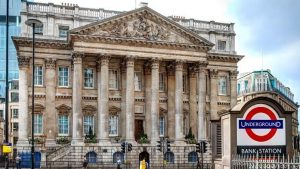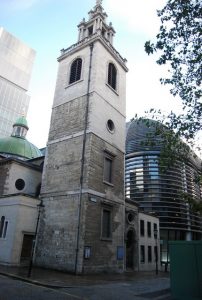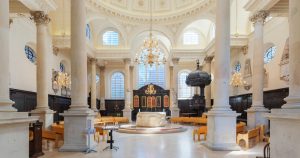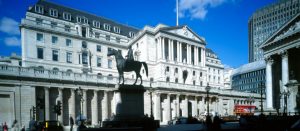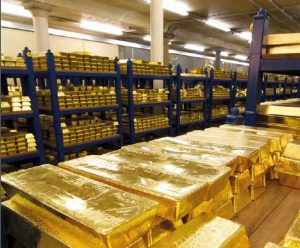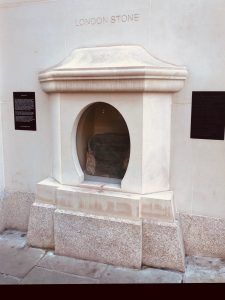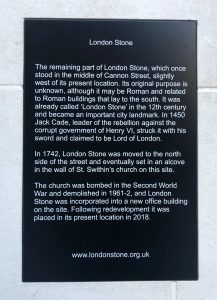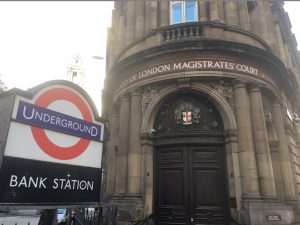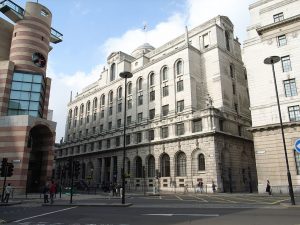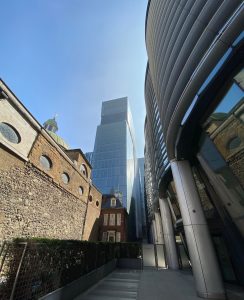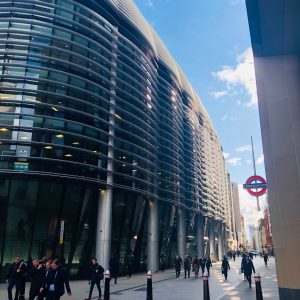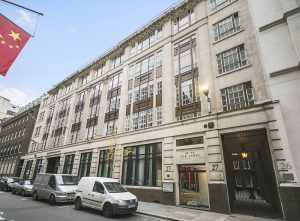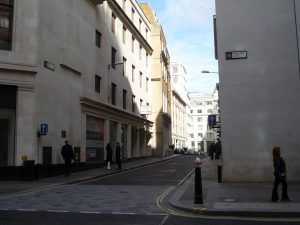Walbrook Ward is at the central heart of the City of London, has a rich history and has many landmark buildings.

Mansion House
Until the mid-18th century, Lord Mayors used their own houses or livery halls for their work.
The idea of creating a permanent residence arose after the Great Fire of 1666 to provide a house for Lord Mayors who did not have their own livery hall. But it was almost three quarters of a century later that first stone was laid in 1739. It was not until 1752 that Lord Mayor Sir Crispin Gascoigne was able to take up residence there. Work was completed in 1758.
St Stephen Walbrook
The history of the ward church goes back to the eleventh century. It is dedicated to St Stephen the Martyr and was replaced by a Gothic church on the present site in 1439. The church was lost once more in the Great Fire of 1666 and Sir Christopher Wren built the existing church between 1672-1679.
The Bank of England
The Bank of England was first established in Walbrook, a street in the City of London, it moved to its current location in Threadneedle Street in 1734 and thereafter slowly acquired neighbouring land to create the edifice seen today.
The Bank is custodian to the official gold reserves of the United Kingdom and many other countries. The vault beneath covers a floor space greater than that of the third-tallest building in the City, Tower 42, and needs keys that are three feet long to open. These gold deposits are estimated to have a market value of around £156,000,000,000. If Walbrook Ward was an independent state, it would make it the wealthiest in the world on a per capita basis.
The Bank of England Museum has a unique selection of displays and exhibits, covering the Bank’s role in maintaining monetary and financial stability, a banknote gallery, the history of the Bank, its buildings, and the people who have shaped it over more than 300 years.
125 Old Broad Street – “The Old Stock Exchange Tower”
125 Old Broad Street was formerly known as the Stock Exchange Tower and is still often referred to as such, is a high-rise office building in London, located on Old Broad Street. For over 30 years the Stock Exchange Tower was the home of the London Stock Exchange, until the latter’s relocation to Paternoster Square in 2004. Face-to-face trading was conducted on the trading floor of the exchange until it was abolished in favour of electronic trading in the October 1986 deregulation of the London Stock Exchange known or “Big Bang”. Today the building is occupied by a number of City businesses.
On 20 July 1990 the Provisional IRA exploded a bomb inside the tower, causing its evacuation. The bomb destroyed the public viewing areas in the building which subsequently closed in 1992.
London Stone is a historic landmark traditionally housed at 111 Cannon Street. It is an irregular block of oolitic limestone, the remnant of a once much larger object that had stood for many centuries on the south side of the street.
It has recently been restored and was temporarily housed in the Museum of London before returning to its rightful place in Walbrook Ward in the heart of the City of London.
The City of London Magistrates’ Court
This distinctive triangular building houses four court rooms and ten cells. Although the building is owned by the City of London, the court’s legal functions are administered from City of Westminster Magistrates’ Court.
Grocers’ Hall
Grocers’ Hall is the home of The Worshipful Company of Grocers one of the 110 Livery Companies of the City of London and ranks second in order of precedence. It is the Company’s fifth Hall and was completed in 1970, the fourth Hall being destroyed in a fire in 1965 and described as the worst fire in the City since The Blitz.
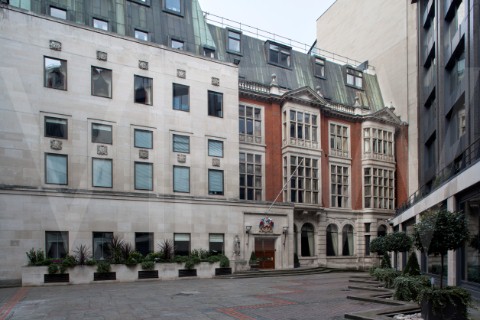
The Grocers’ Company was established in 1345 for merchants occupied in the trade of grocer and is one of the Great Twelve City Livery Companies. The Company was founded in the 14th century by members of the Guild of Pepperers, which dates from 1180. The Company was responsible for maintaining standards for the purity of spices and for the setting of certain weights and measures. Its members included the suppliers of medicinal spices and herbs, who separated forming the Worshipful Society of Apothecaries in 1617.
Further information can be found on The Grocers’ Company website.
The Ned – former Midland Bank headquarters
The Ned hotel is the former head office of Midland Bank, for some decades from 1918 the largest bank in the world.
The grade one listed exterior and the fine banking hall were designed in the early 1920s by the eminent architect of empire Sir Edwin Lutyens. Today it comprises a 250 room hotel including nine restaurants.
Further details of The Ned Hotel and its restaurants and bars can be found on its website.
New Court
New Court, also known as The Rothschild Headquarters, is a collection of proximate buildings in London having served as the global headquarters of the Rothschild investment bank since 1809. The current building is the fourth incarnation of the Rothschild offices at the same street address. Until 2004, the world price of gold was fixed daily at this building.
The Walbrook Building
The Walbrook Building was designed by Foster & Partners. Construction of The Walbrook Building commenced in the summer of 2007. The building was completed in February 2010. The project comprised the redevelopment of three properties – St. Swithin’s House, Granite House and Walbrook House. The development is named after the river that runs below the street that has been covered since Victorian times.
There is a new entrance to Bank Underground Station opposite the building which was opened in December 2018 as part of the ongoing upgrade of Bank Station.
Old Jewry
A street rather than a building, Old Jewry marks the eastern boundary of the Ward.
William the Conqueror encouraged Jews to come to England soon after the Norman Conquest; some settled in cities throughout his new domain, including in London. According to Reverend Moses Margoliouth, Old Jewry was a Jewish ghetto which were common across Europe. In 2001, archaeologists discovered a mikveh (ritual bath) near to Old Jewry, on the corner of Gresham Street and Milk Street.
Thomas Rowlandson the artist was born on Old Jewry in 1756 and for many years, the headquarters of the City of London Police was in Old Jewry.
